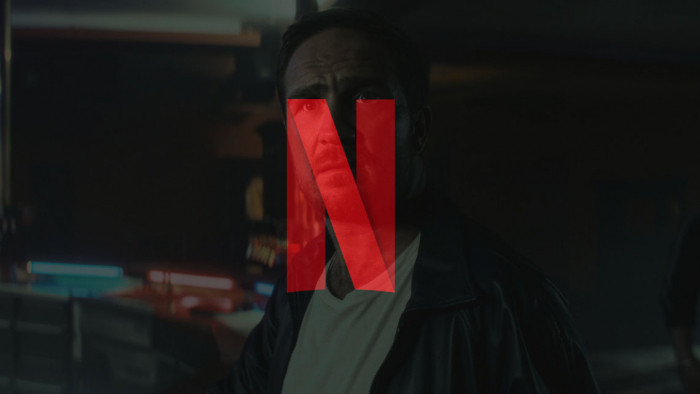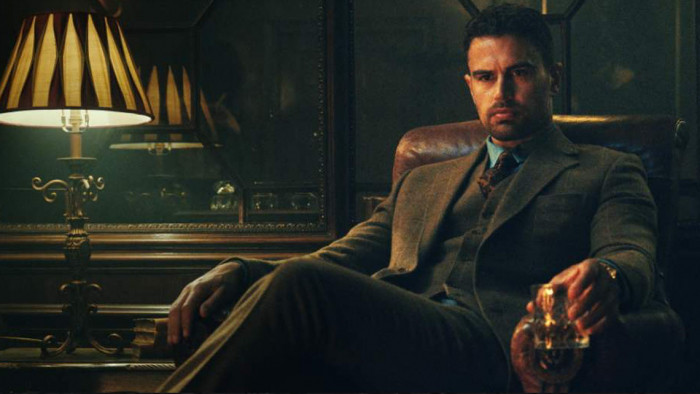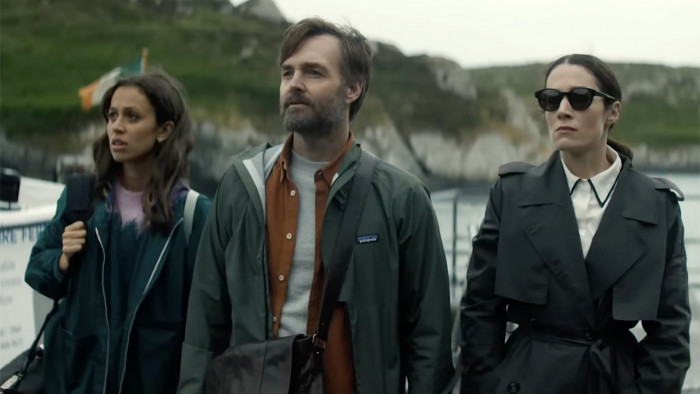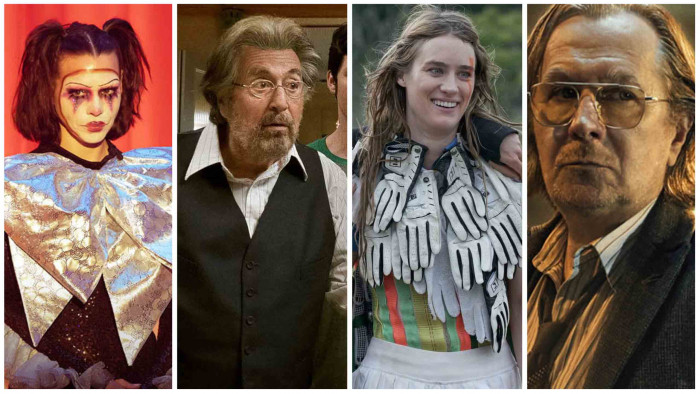This is how close we are to having the technology from each 'Black Mirror' episode
We asked experts, and it's closer than you'd think


Black Mirror continues to be one of the most talked-about shows of the minute. Its latest season was released recently to rave reviews – despite my own reservations about the at-times disappointing plot twists.
And one thing that keeps viewers so hooked is the show’s engagement with complex discussions about the future of technology and how it will affect humanity. Some of this season’s episodes were incredibly dark and present a particularly grim outlook (please see the marauding, deadly robot dogs in Episode 5).
So, we decided to reach out to some leading tech experts to find out just how far off this technological revolution could feasibly be. This is what they told us…
*If you STILL haven’t seen all the episodes, there are spoilers ahead*
Episode 1: ‘USS Callister’
This episode is all about a freaky, simulated reality MMORPG (massively multiplayer online role-playing game) called Infinity, which you can access using a neural device like the one we’ve seen in the earlier episode ‘San Junipero’. In the show, tech company boss Robert Daly (Jesse Plemons) secretly steals his colleagues’ DNA – from things like left-over coffee cups – and makes digital clones of them to be used in his personal off-line version of the game. Mayhem ensues and it’s a fantastic episode.
What the experts say
Jono MacDougall, senior software engineer at Ravelin Technology (which focuses on machine-based learning), said: “Neural implants are not something we will see anytime soon. Neither is the ability to ‘upload’ a consciousness to a machine and certainly not just from DNA.
“I suppose the most interesting question in this episode is what it is to be conscious. We feel for these digitally recreated characters but they are only code in a machine. Are they simply simulating emotions? Or are they feeling them? At what point is a simulated emotion realistic enough that we should consider it a ‘real’ emotion?
“These are questions that we are tackling right now with Google Home and Alexa. Do we need to say please and thank you to these digital assistants? Sometimes they have personality and feign emotion but we know it is fake. Is there a point when that is realistic enough that it doesn’t matter that it’s fake. We accept it as real emotion.”
Dr. Adjmal Sarwary, CEO of neuro-tech company mindtrace, added: “Plugging in with a neural implant like in The Matrix is still far away – maybe around 20 years. But there are some VR-type games going in that direction. To do that properly we need to understand the ‘neural code’ much better than we do at this point and if a neural connection is made to an interactive game like this, the connection needs to be bidirectional; the gamer needs to be able to play the game but also ‘feel’ the feedback from within the game.”
Episode 2: ‘Arkangel’
In the second episode – directed by the one-and-only Jodie Foster – we see an overprotective mother (Rosemarie DeWitt) having a neural implant inserted into her daughter’s brain, letting her monitor her child’s health, location and immediate eyesight in real time. There’s also the option to censor obscenity and pixelize stressful situations.
What the experts say
Jono MacDougall told me: “We aren’t going to get a chip in our brain tracking everything we say, see and do anytime soon but we already have some pretty crazy tracking on people and particularly children - there have even been cases of parents following children with drones.
“The more interesting aspect of this episode is the ability to censor the world. AR technology as seen in Android and Apple phones today can place digital objects on top of the real world through the camera. Further, computer vision is getting to a point where computers are far more able to interpret what they ‘see’. For example, I suspect it may be possible to train a model to recognise violence today.
“Combine these current technologies with looming products like hololens and magic leap - these are glasses you can wear that allow you to see digital objects that exist and interact with the real world. With this you could potentially build something similar to what is seen in the show. Of course, all you would need to do is take off your glasses to see what is ‘real’.”
Here’s a video explaining what hololens is all about (and it looks pretty cool):
Episode 3: ‘Crocodile’
This Scandi noir-inspired episode features a ‘Recaller’ machine that’s used to harvest people’s memories in order to find out whether insurance claims are legit or not. In one mildly ridiculous scene, police use one of the machines on a guinea pig.
P.S. There’s also a self-driving pizza delivery truck.
What the experts say
Dr. Sarwary says: “A machine reading memories is more difficult as the neural code is still a mystery. At the same time memories are not fixed and are quite faulty and can be easily influenced. For that reason, the ‘Recaller’ might not be good enough or actually useful for verifying insurance claims. And a self-driving pizza delivery truck is very plausible and could be done today already.”
Jonathan Knight, founder of tech company Perfect Ward, adds: “Retrospectively gathering memories by plugging a sensor into someone’s brain doesn’t seem like it would work – the unique way each brain stores and processes thoughts and memories is unlikely to work with such an instant download. A more plausible scenario is having those memories constantly fed into a computer, which is accessible to you and potentially others (a theme explored in the first series of Black Mirror) and you can see this plot line working on that basis.
“If you were looking to sharpen specific memories, using smell (and to a lesser extent music) to prompt memories has reasonable roots in research too. And the way they show that memory is a collection of different thoughts, impressions and biases is a better way to think of how this could work than playing back a perfect video tape.
“It would almost certainly never work on a guinea pig though.”
Episode 4: ‘Hang the DJ’
This episode features an AI dating app known as ‘Coach’ – think a female HAL 9000 – which is installed on a small, circular tablet. This device determines who you will date and how long you’ll date them for, all in an effort to find your ‘ultimate compatible other’.
We later find out that the characters are in fact part of a simulation for the app’s matchmaking algorithm.
What the experts say
Dr. Sarwary says: “Doing something like this could be done today - but if it’s implemented like in the episode it would require huge amounts of data. Legally I don’t see a problem if the users consent to it. Morally the question arises: ‘What is love and is there a formula for happiness?’”
Episode 5: ‘Metalhead’
The stars of this episode are the terrifying four-legged robotic guard dogs. They are weaponised and shoot out shells that explode mid-air, and shower shrapnel containing barbed electronic trackers. The robotic dogs also have the ability to run at high speed, to control cars and to track humans.
What the experts say
Dr. Sarwary says: “Four-legged robotic guard dogs can already be done. Boston Robotics does great work in this area but for them to be reliable enough to simply run on different types of surface and to be able to keep their balance if pushed etc. is still some way off.”
Jono MacDougall said: “Boston Dynamics makes one of these. It is real. It will kill us all.”
Episode 6: ‘Black Museum’
The final episode of the season has three separate stories: the first shows a neurological implant that allows a doctor to feel the physical sensations of his patients in order to diagnose them more quickly.
The second sees the consciousness of a comatose patient transferred into the brain of an alert and healthy person, allowing the formerly comatose person to see via the host’s eyes, hear what they hear, feel what they feel and communicate internally with the host. Later, the consciousness is transferred to a stuffed toy.
Lastly, there is a hologram projection of a condemned man who has signed over the rights to his post-death consciousness when he is on death row. This post-death consciousness is subjected to repeated, brutal torture.
What the experts say
Dr. Sarwary says: “Just because you ‘feel’ the sensations, it doesn’t necessarily mean you will be better at diagnosing what is happening. Humans are terrible in feeling and rationally deciding what is wrong and the same could be the case for a doctor.
“And transferring consciousness might never be possible. Anyway, if you have a ‘copy’ of someone’s consciousness is that still consciousness? There are also some brain activity measures (EEG) that are being used to diagnose if a comatose patient is still alive.”
Jonathan Knight said: “There are elements of this that aren’t so farfetched and raise some very relevant questions – the idea of being able to download someone’s brain to a computer is being taken seriously, in fact one-time, read-only access to the brain might be significantly easier than attempting to build a full two-way interface between machines and human minds.
“The technical challenges would be huge but in this scenario, it would be possible to ‘back-up’ human consciousness to a computer and to achieve a form of immortality for your thoughts and memories after your body fails. So you could conceivably back up your wife or father before they died and continue to interact with them through a computer, at least in some form – and indeed there would be no technical reason why you couldn’t have multiple copies of each person.
“How we would choose to interact with such backed up people would raise all kinds of moral considerations, and we would have to find a new way of thinking about what death really means, what rights such ‘dead’ people have and what happens when they come into conflict with the ‘living’. In that regard, I think this episode does raise very valid concerns about one direction we might be heading in.”
(Images: Netflix)








